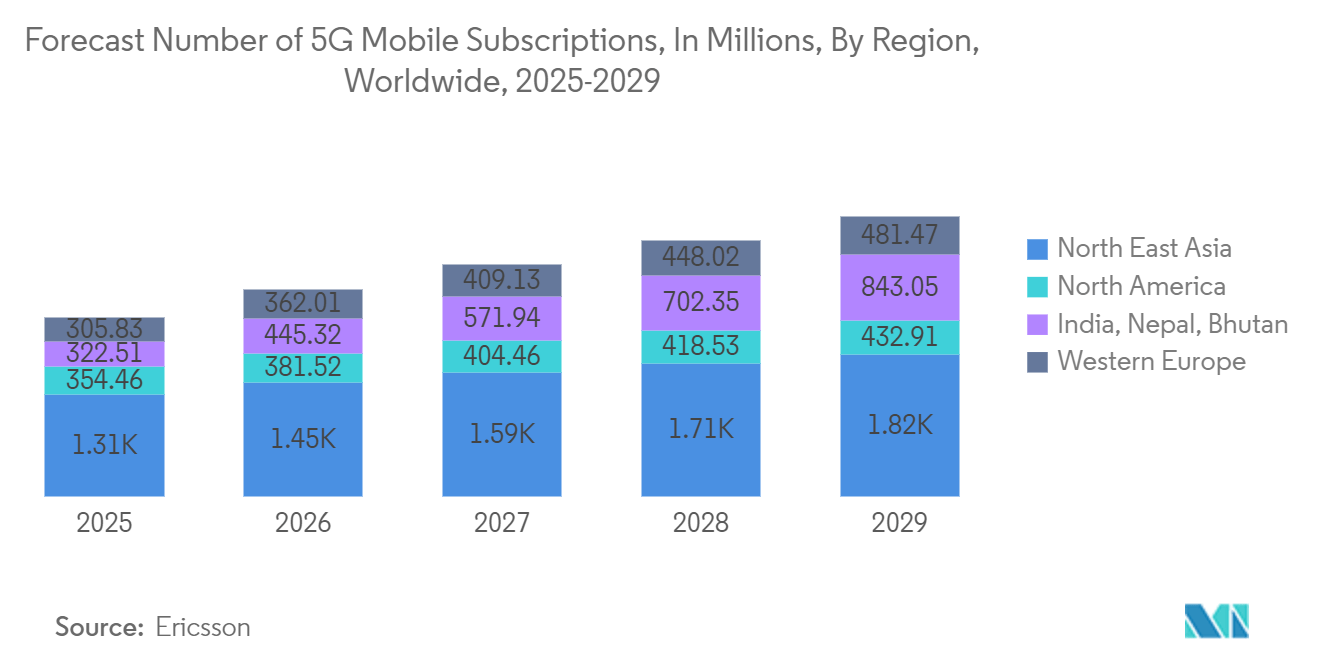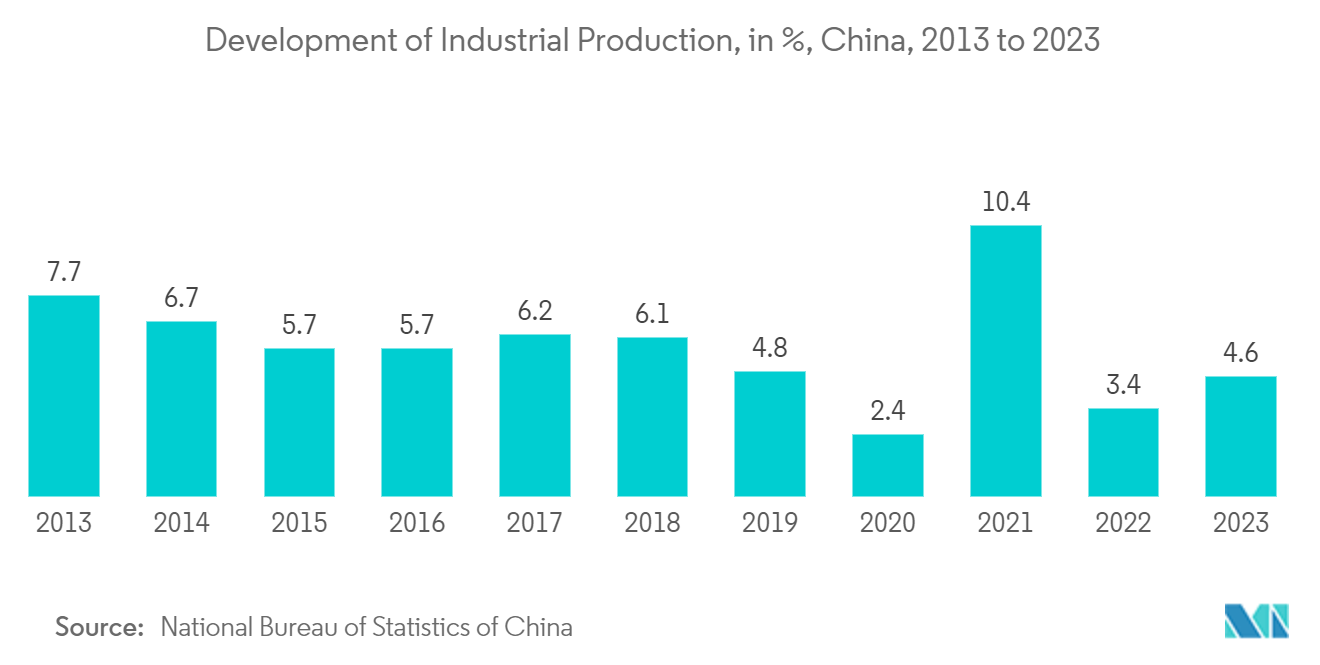Market Trends of Industrial Logic Integrated Circuits Industry
The MOS Logic Segment is Anticipated to Hold a Major Market Share
- Metal-oxide-semiconductor (MOS) logic integrated circuits (ICs) have revolutionized the industrial segment, particularly in manufacturing, factory automation, and industrial robotics. Their unique properties, such as low power consumption, high noise immunity, and scalability, render them essential in various industrial sector applications.
- MOS logic ICs play a pivotal role in manufacturing process control systems. They enable precise monitoring and control of machinery and equipment, ensuring optimal operation and minimizing downtime. Through programmable logic controllers (PLCs) that leverage MOS ICs, manufacturers can automate complex processes, such as assembly lines, material handling, and quality control. These systems utilize MOS technology to execute logic operations, enhancing production efficiency and product quality.
- MOS logic ICs are integral to developing smart manufacturing systems in factory automation. They facilitate communication between various automated systems, such as sensors, actuators, and controllers. MOS technology enables the implementation of real-time data processing, allowing for quick decision-making and adaptive responses to changing conditions on the factory floor. For instance, MOS-based systems can manage inventory levels, monitor equipment health, and optimize production schedules, reducing waste and increasing operational efficiency.
- Industrial robots heavily rely on MOS logic ICs for their control systems. These ICs enable complex algorithms that govern robot movement, path planning, and task execution. MOS technology allows for the integration of multiple sensors and feedback systems, enabling robots to perform tasks with high precision and reliability. They are employed in several applications, such as welding, painting, assembly, and material handling, where robots equipped with MOS technology can adapt to various manufacturing environments and improve productivity.
- MOS logic ICs are fundamental to embedded systems used in industrial applications. These systems often require dedicated control over specific tasks, such as monitoring manufacturing processes' temperature, pressure, or flow rates. MOS technology provides the necessary computational power while maintaining compact size and low power consumption, which is crucial in embedded applications.
- Effective communication among different components in a manufacturing environment is vital. MOS logic ICs are used in various communication protocols, such as Modbus, CAN, and Ethernet, facilitating data exchange between machines, sensors, and control units. This interconnectedness is essential for achieving Industry 4.0 standards, where data-driven decision-making enhances flexibility and responsiveness in manufacturing processes.
- MOS logic ICs are pivotal in developing effective communication networks within the industrial sector's 5G framework. By processing data closer to the source, these ICs reduce latency and improve response times, which is critical for applications requiring real-time data processing.
- According to Ericsson, there were an estimated 2.17 billion 5G mobile subscriptions worldwide in 2024, up from just 1.58 billion the previous year. This figure is expected to exceed 5.56 billion by the end of the decade, with 5G set to surpass 4G as the world's leading mobile network technology. The increasing penetration of 5G is expected to drive the growth of the market studied.
- Further, according to 5G Americas, in the first quarter of 2024, the global adoption of 5G connections continued its steady climb, reaching approximately two billion with an addition of 185 million new connections. North America spearheads the global 5G adoption wave, accounting for 32% of all wireless cellular connections in the region. In a robust first-quarter performance, North America bolstered its 5G landscape by adding 22 million new connections. As of Q1 2024, the tally of 5G connections in North America reached an impressive 220 million.

China is Expected to Witness Robust Market Growth Rate
- China's industrial sector stands as a global economic powerhouse, marked by a dynamic blend of manufacturing, factory automation, and the rapidly evolving realm of industrial robotics. Over the past few decades, this diverse sector has been reshaped by technological innovations, government initiatives, and pressing economic needs.
- China, often dubbed the "world's factory," has earned this distinction due to its vast manufacturing capabilities and competitive labor costs. The nation's manufacturing landscape is broad, spanning industries from textiles and electronics to machinery and automotive.
- The country has heavily invested in infrastructure, creating vast networks of transportation and logistics that facilitate the swift movement of goods. The availability of a skilled labor force and government support for high-tech industries has positioned China as a leader in advanced manufacturing. The "Made in China 2025" initiative exemplifies this commitment, aiming to upgrade the manufacturing sector by emphasizing innovation, quality, and sustainability.
- According to the National Bureau of Statistics of China, the revenue of the Chinese manufacturing industry is projected to amount to approximately USD 885.68 billion by 2025. Further, in 2023, China's industrial production increased by about 4.6% compared to the previous year. The robust manufacturing sector in China is likely to drive the growth of the market studied.
- Factory automation has emerged as a critical component of China's industrial strategy. The adoption of automation technologies has enabled manufacturers to enhance productivity, improve quality, and reduce operational costs. Automation is not merely a trend; it has become important for companies to remain competitive in a rapidly changing global market.
- The Chinese government has been a significant proponent of factory automation, recognizing its potential to drive economic growth. Policies and initiatives have been implemented to encourage the adoption of advanced technologies, such as the Industrial Internet of Things (IIoT), big data analytics, and artificial intelligence (AI). These technologies enable manufacturers to optimize production processes, monitor equipment performance in real-time, and predict maintenance needs, thus minimizing downtime.
- Integrating automation technologies has facilitated the movement toward "smart factories." These factories leverage interconnected devices and systems to streamline operations, improve decision-making, and create a more flexible production environment. As a result, Chinese manufacturers are increasingly able to respond to market demands with agility, producing customized products at scale.


